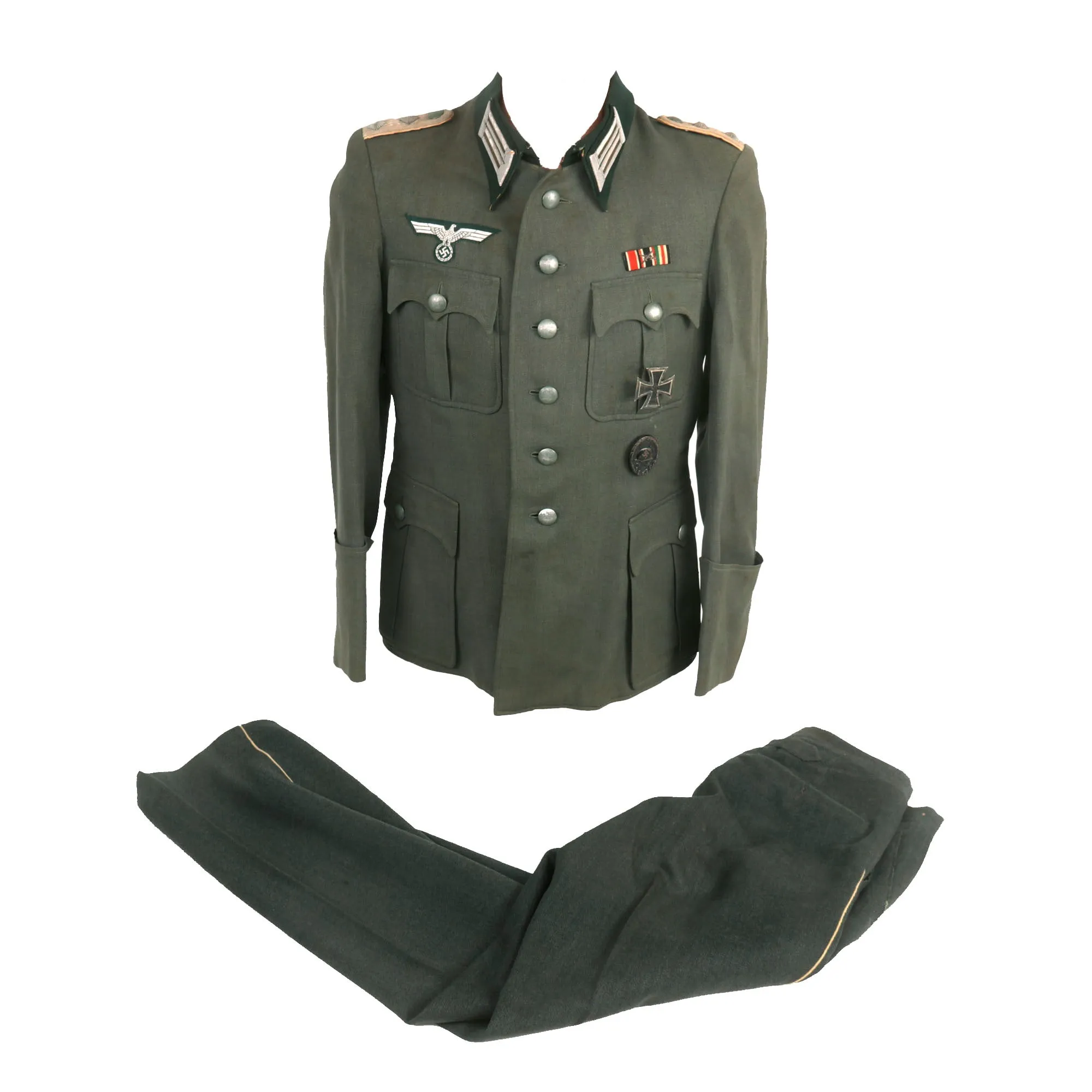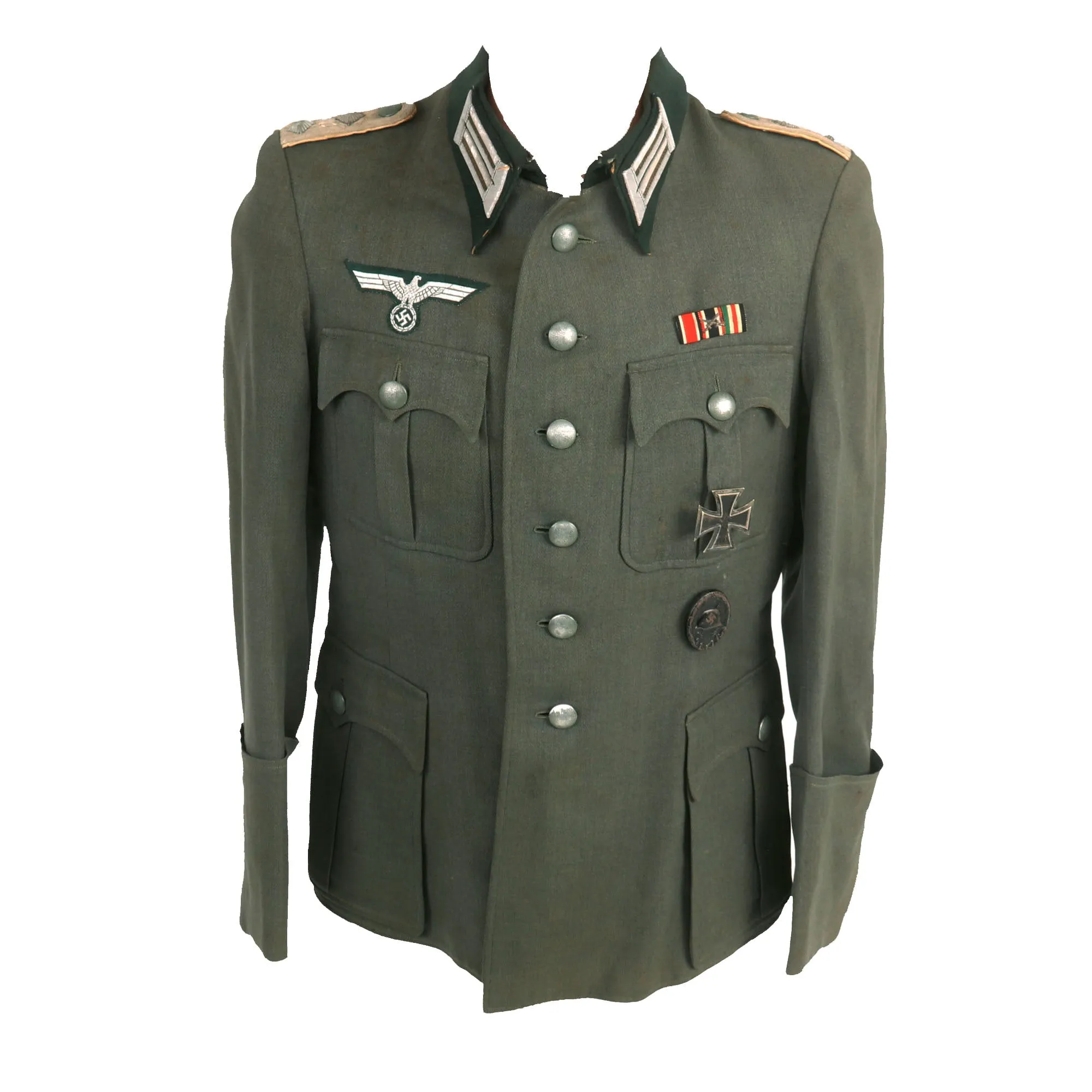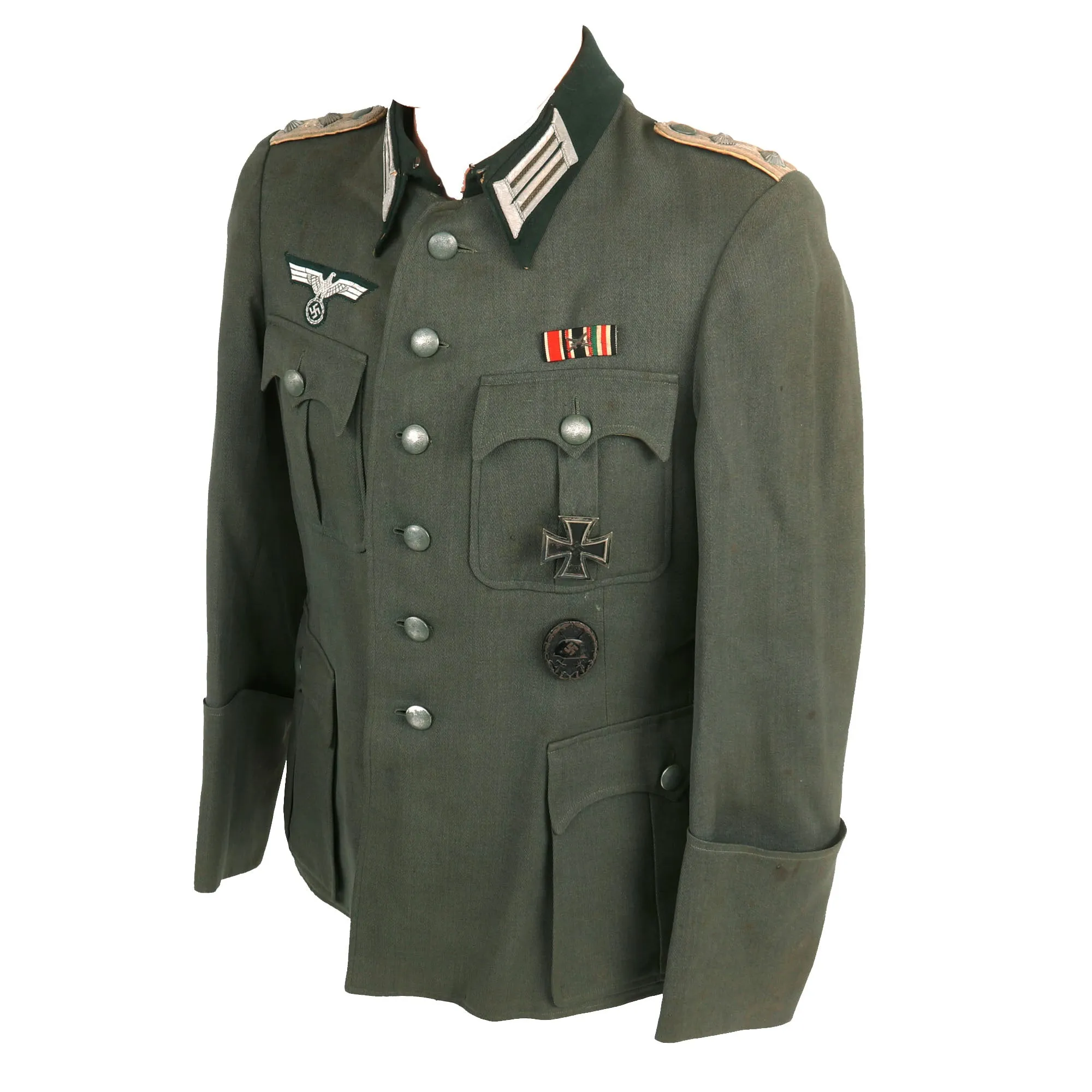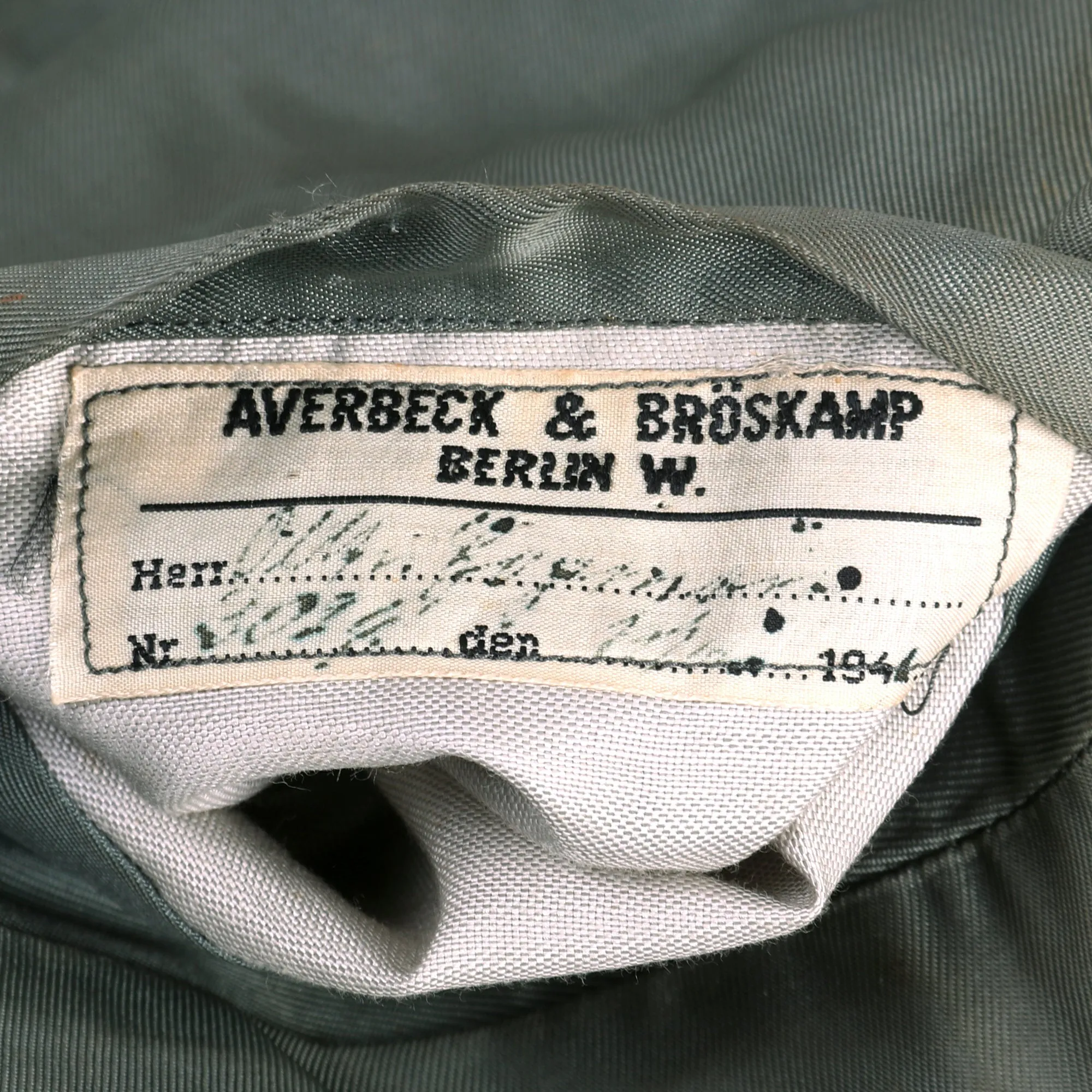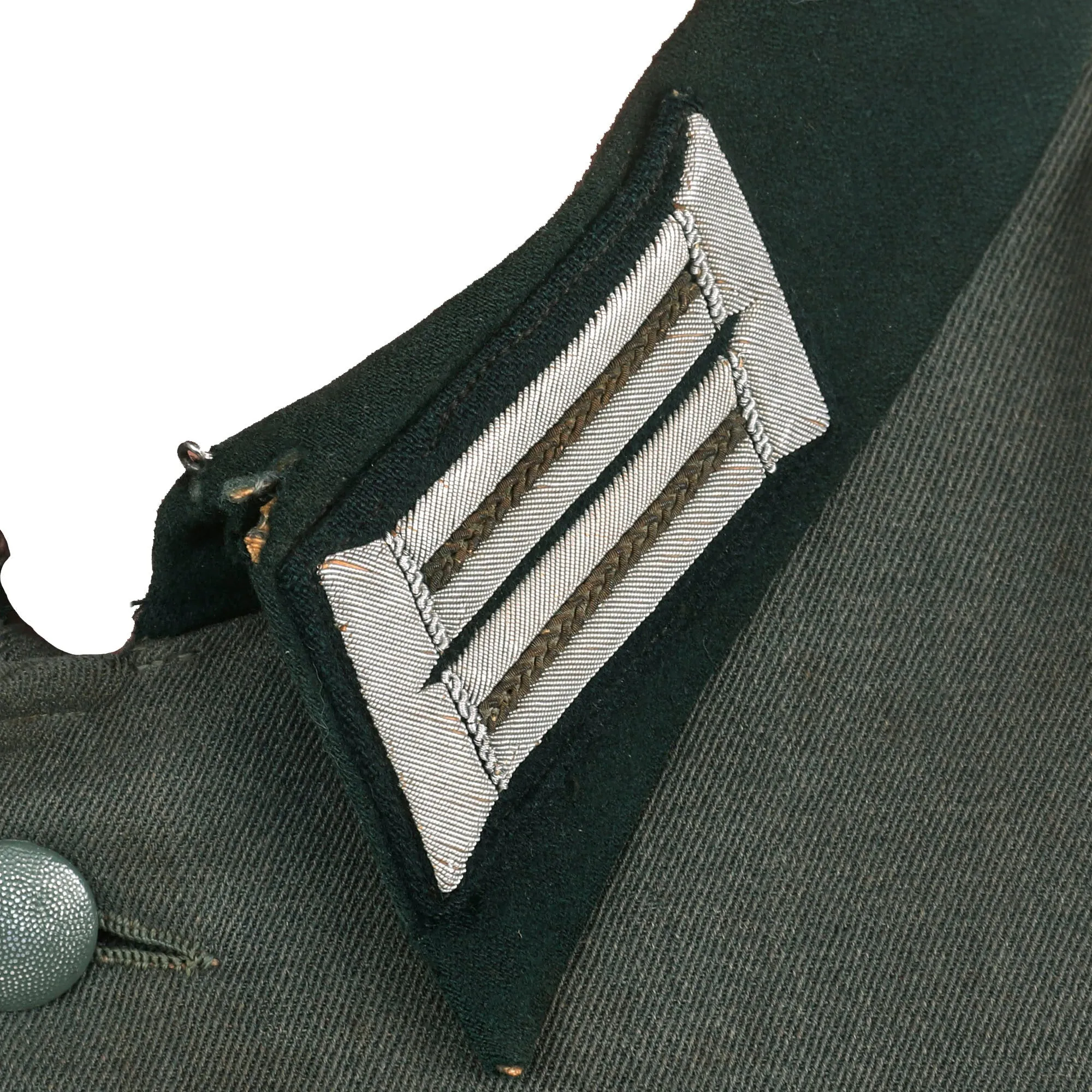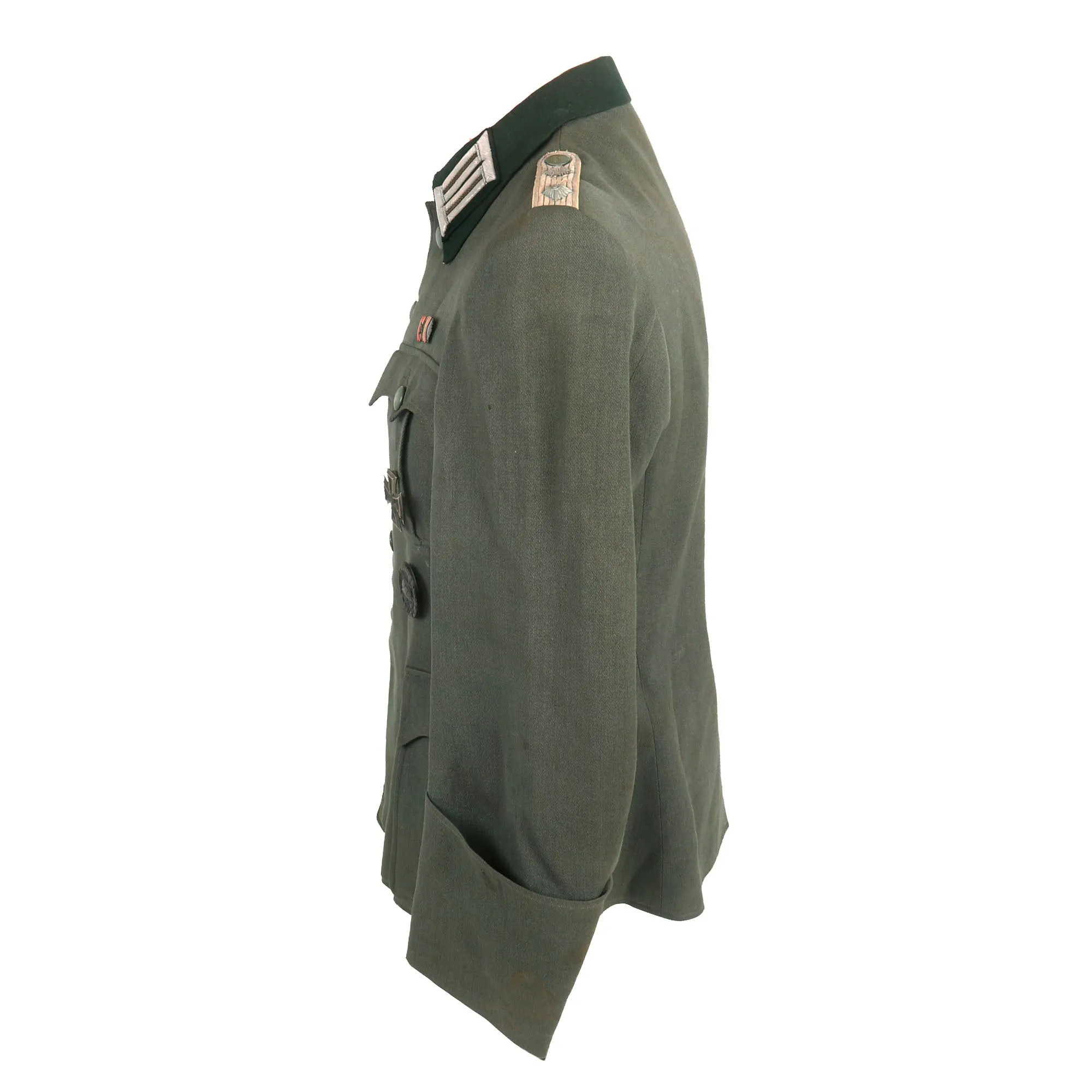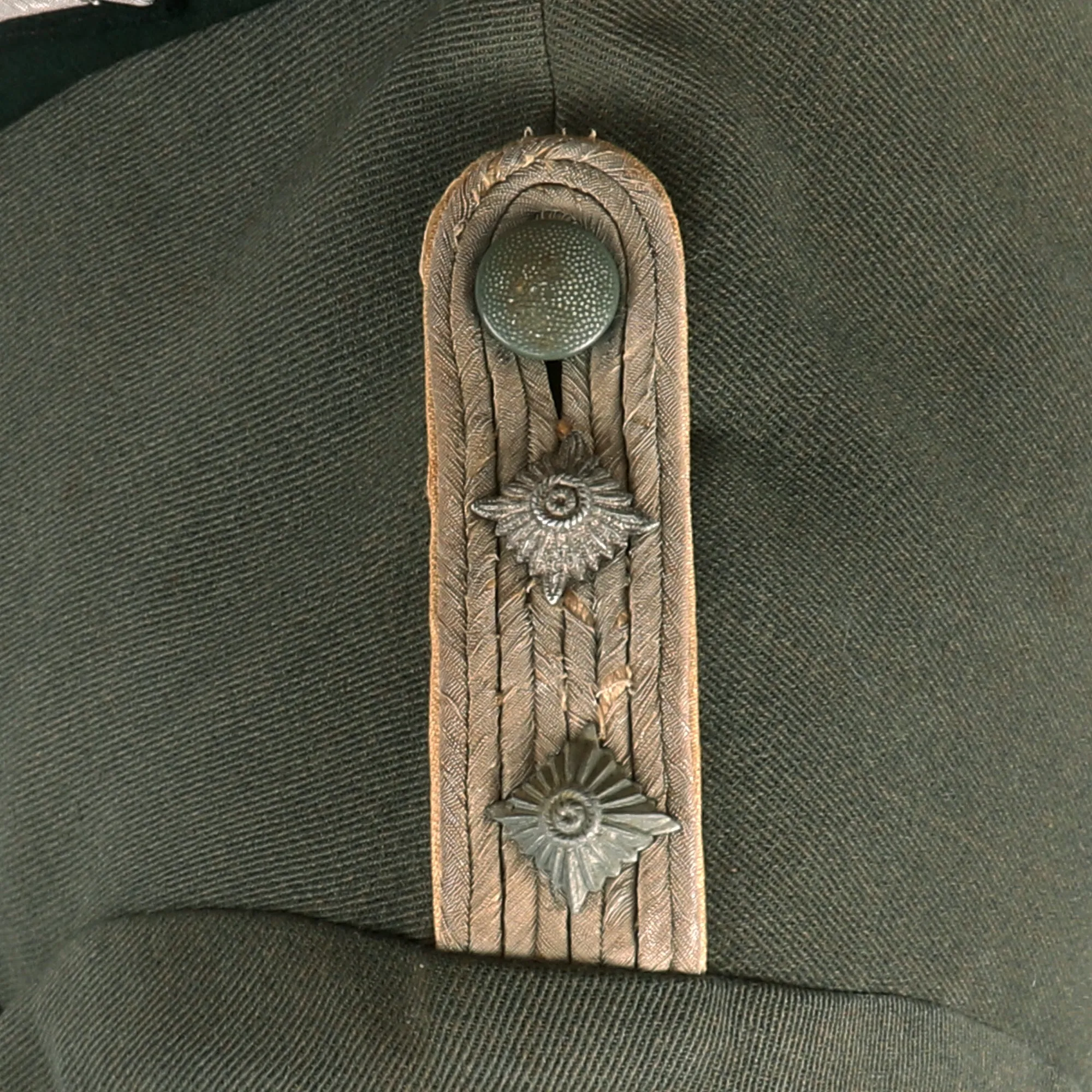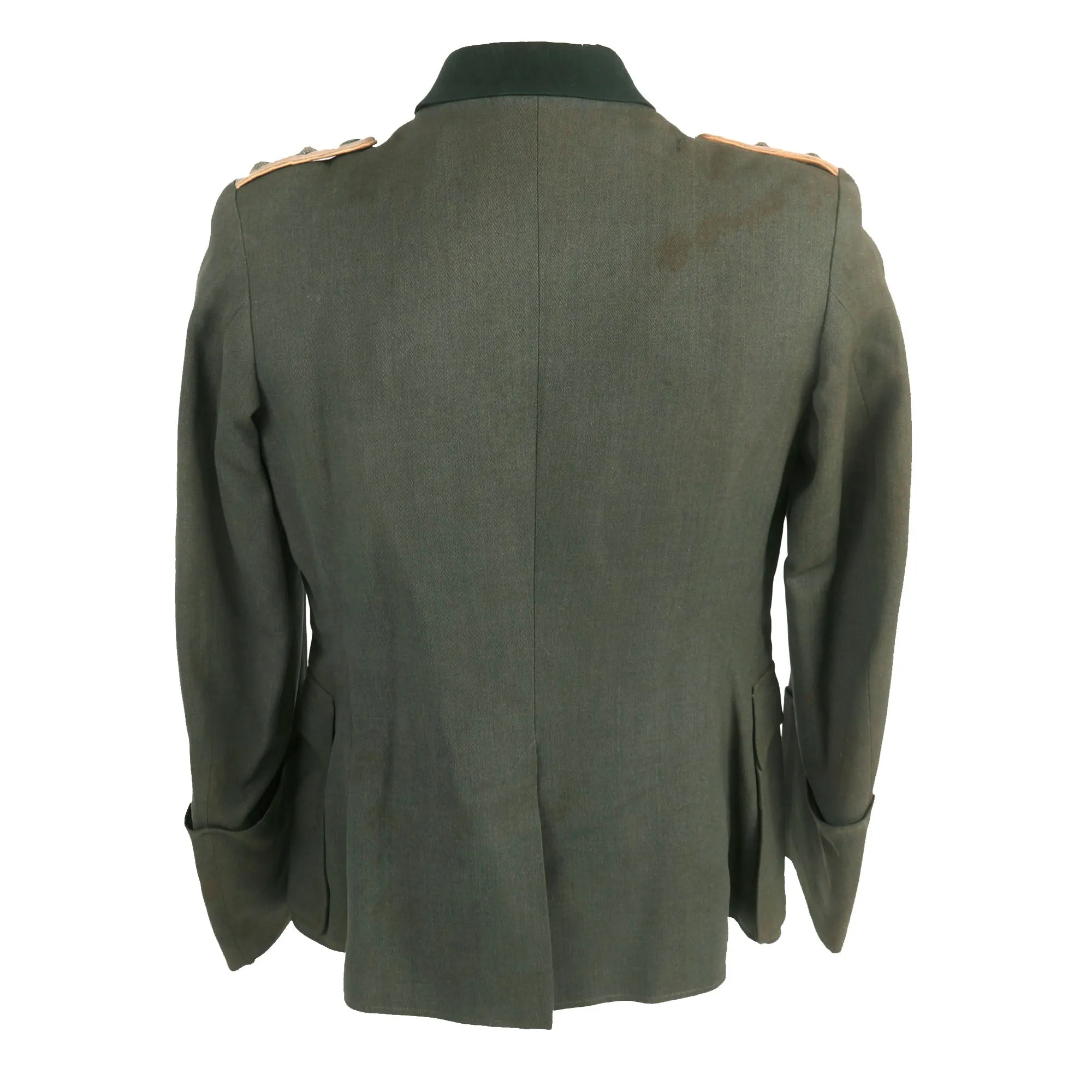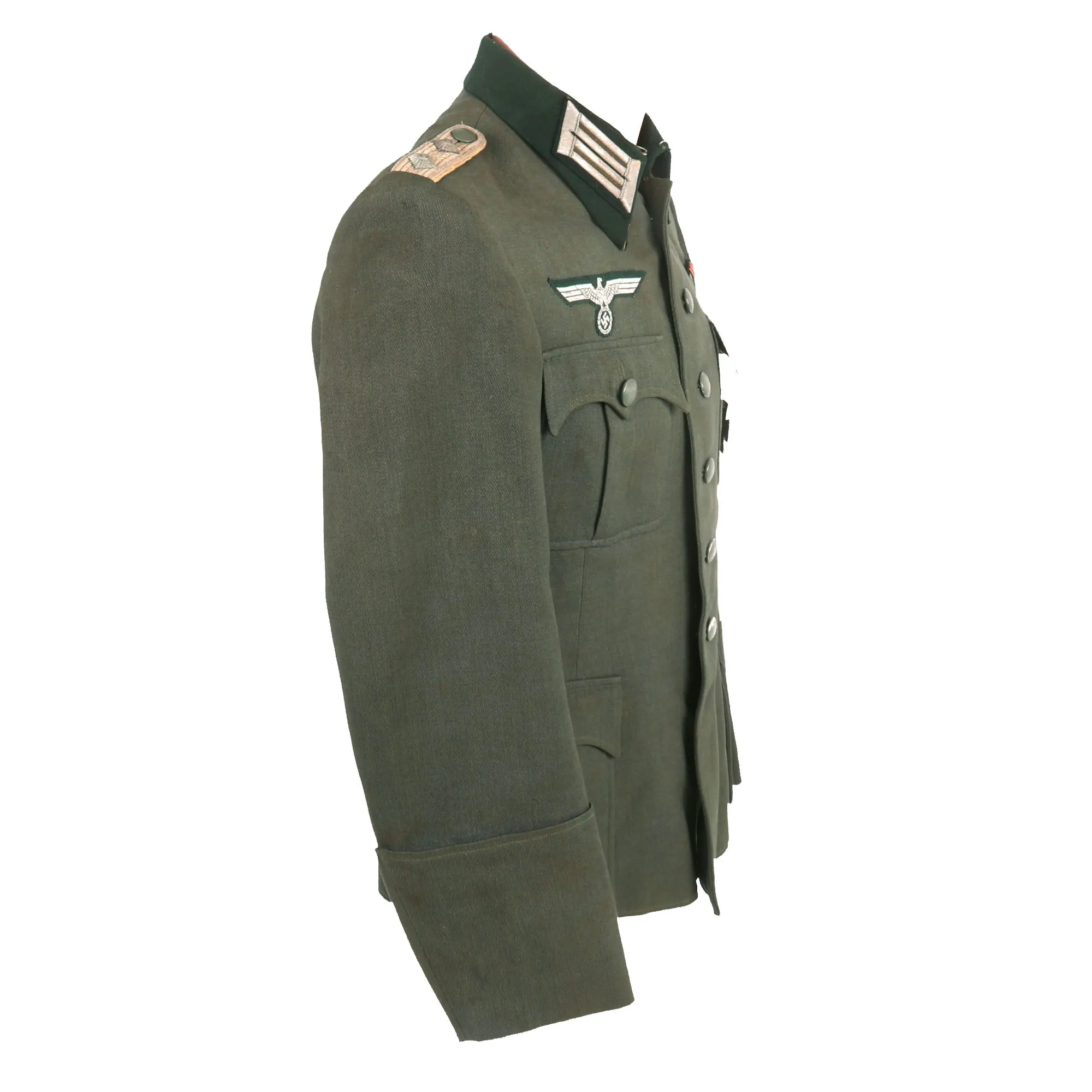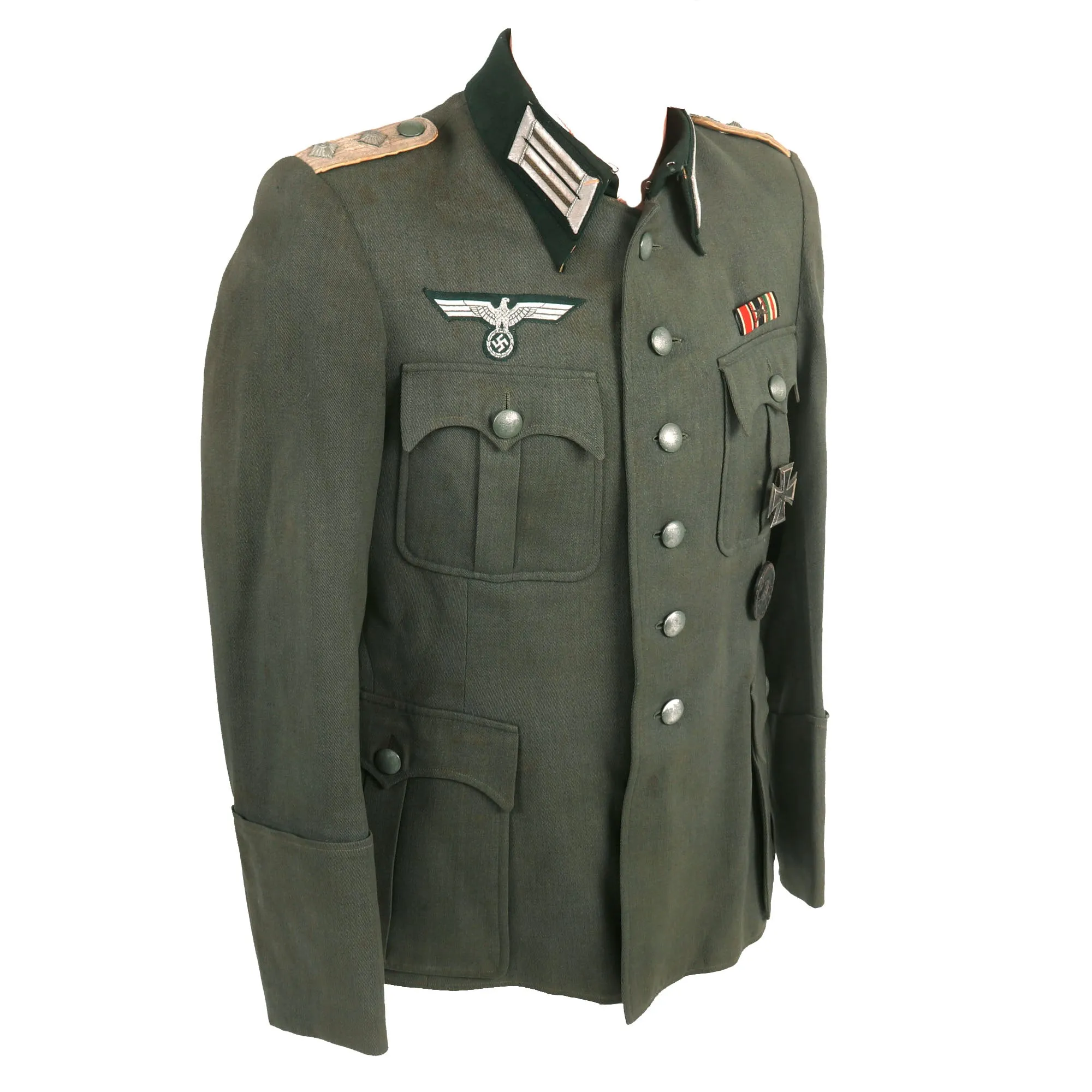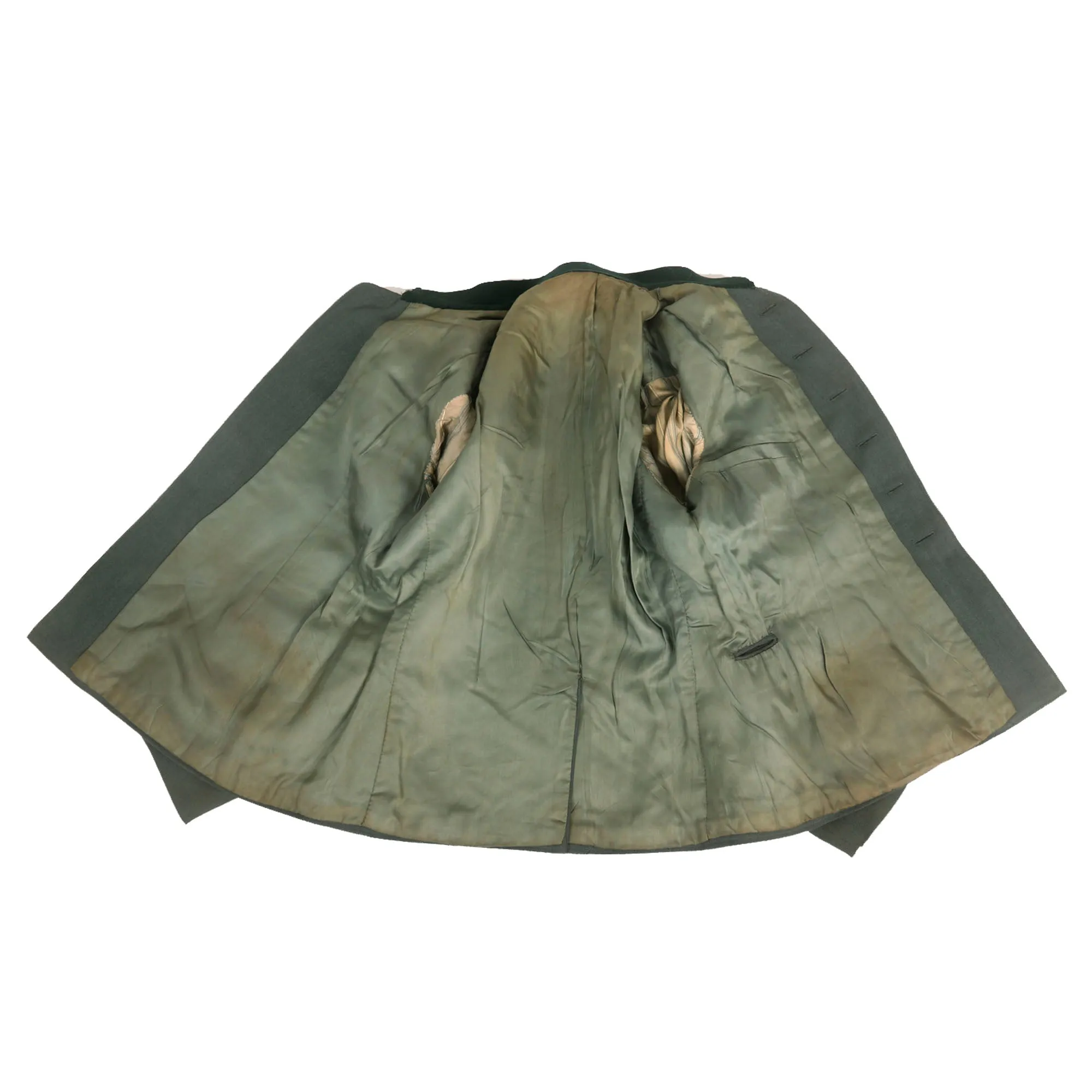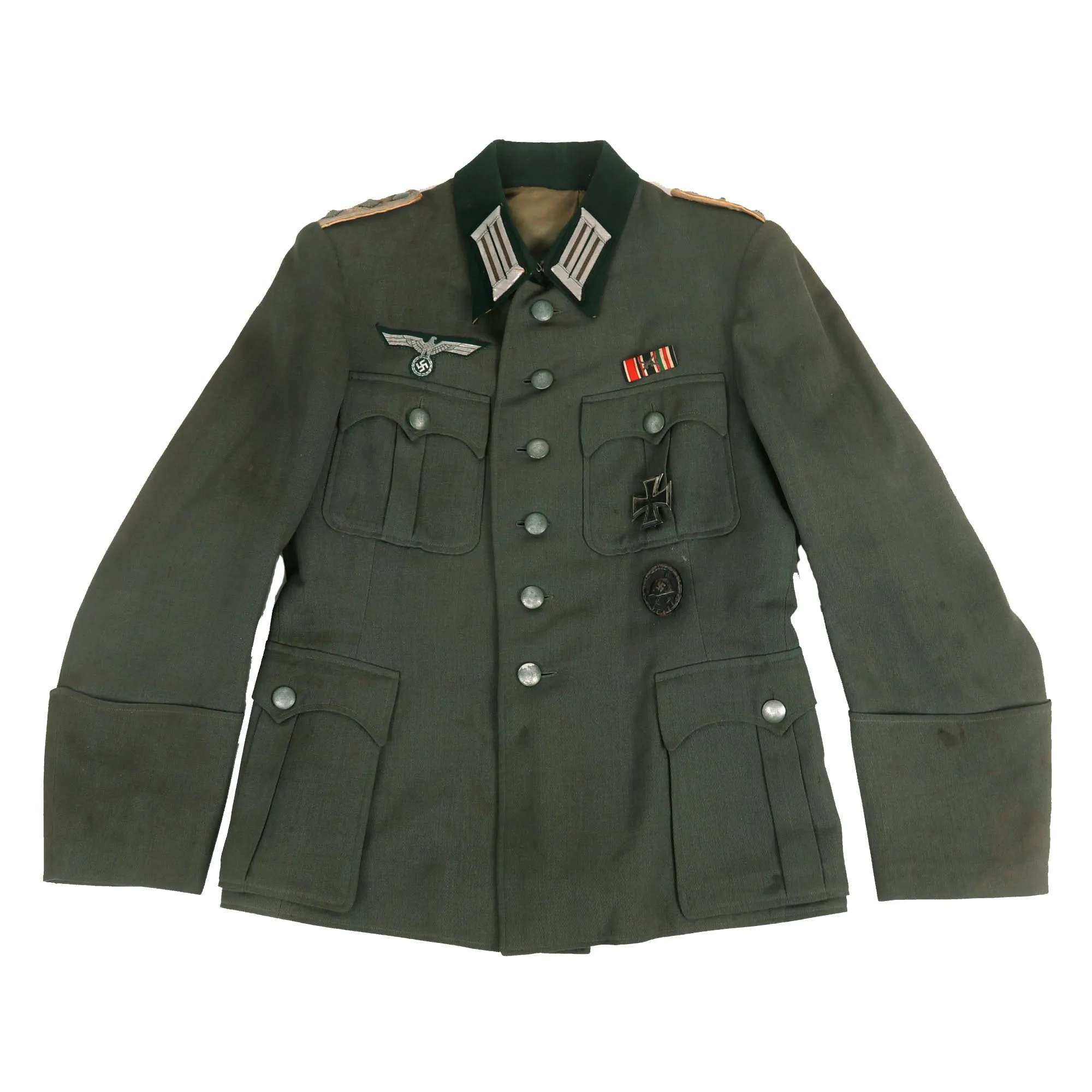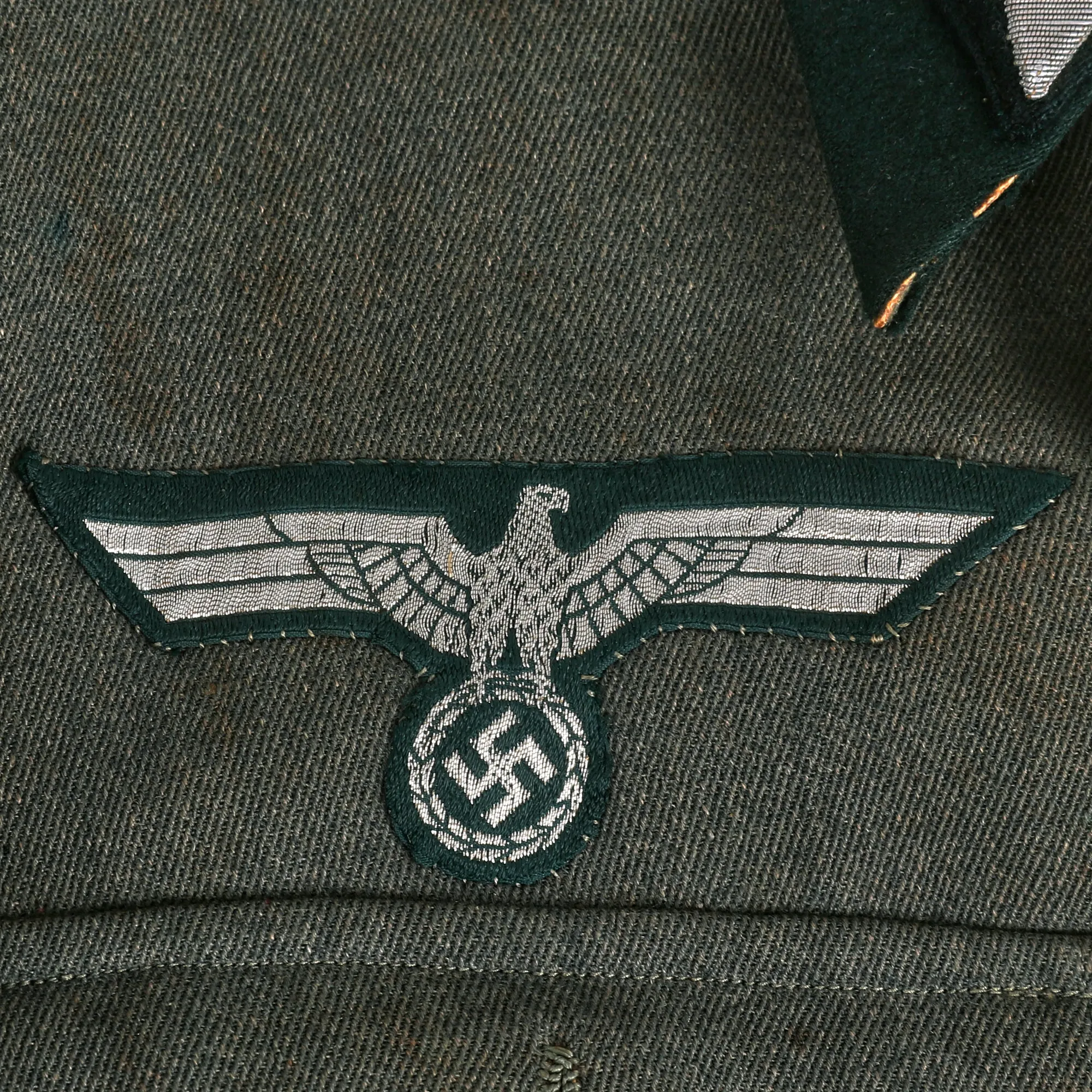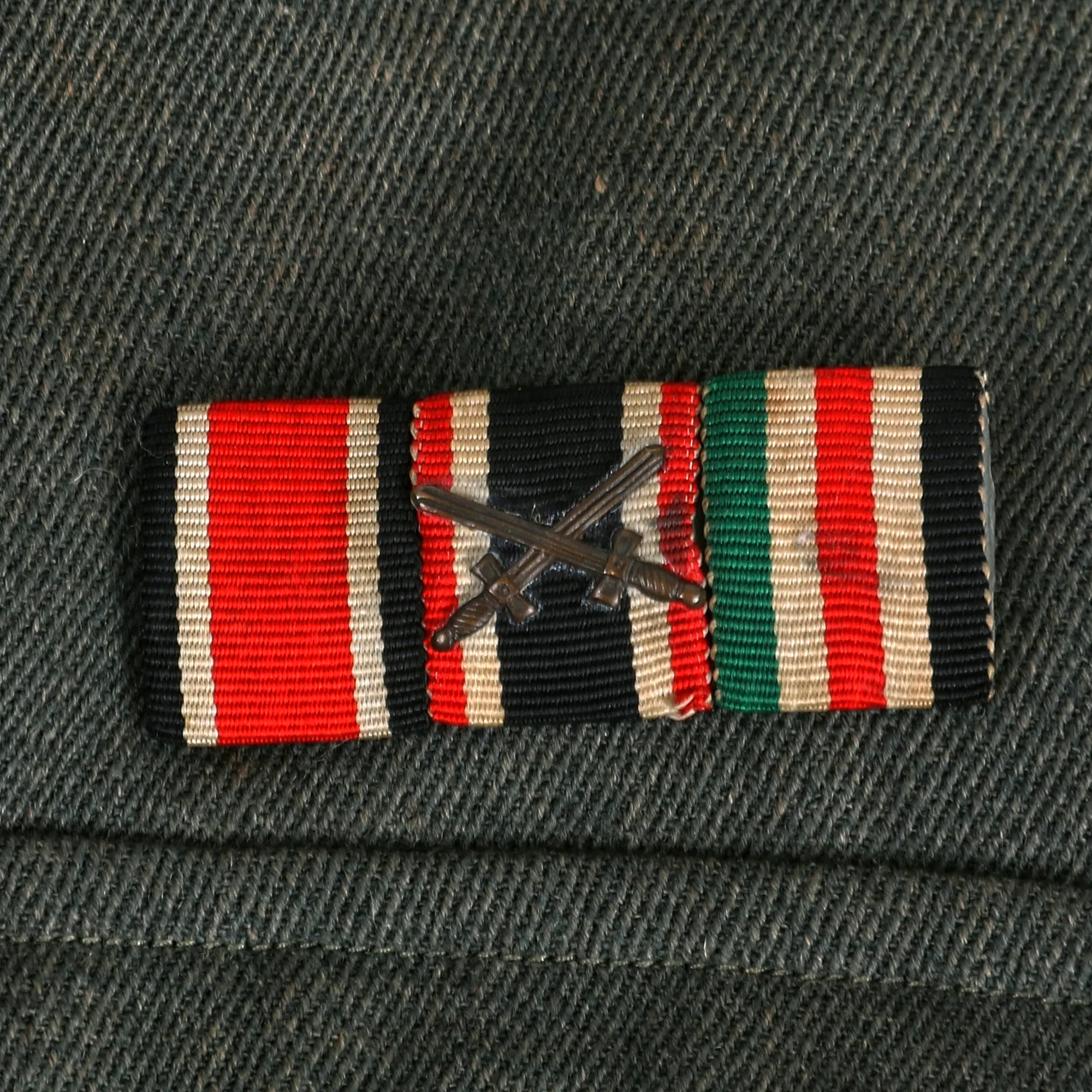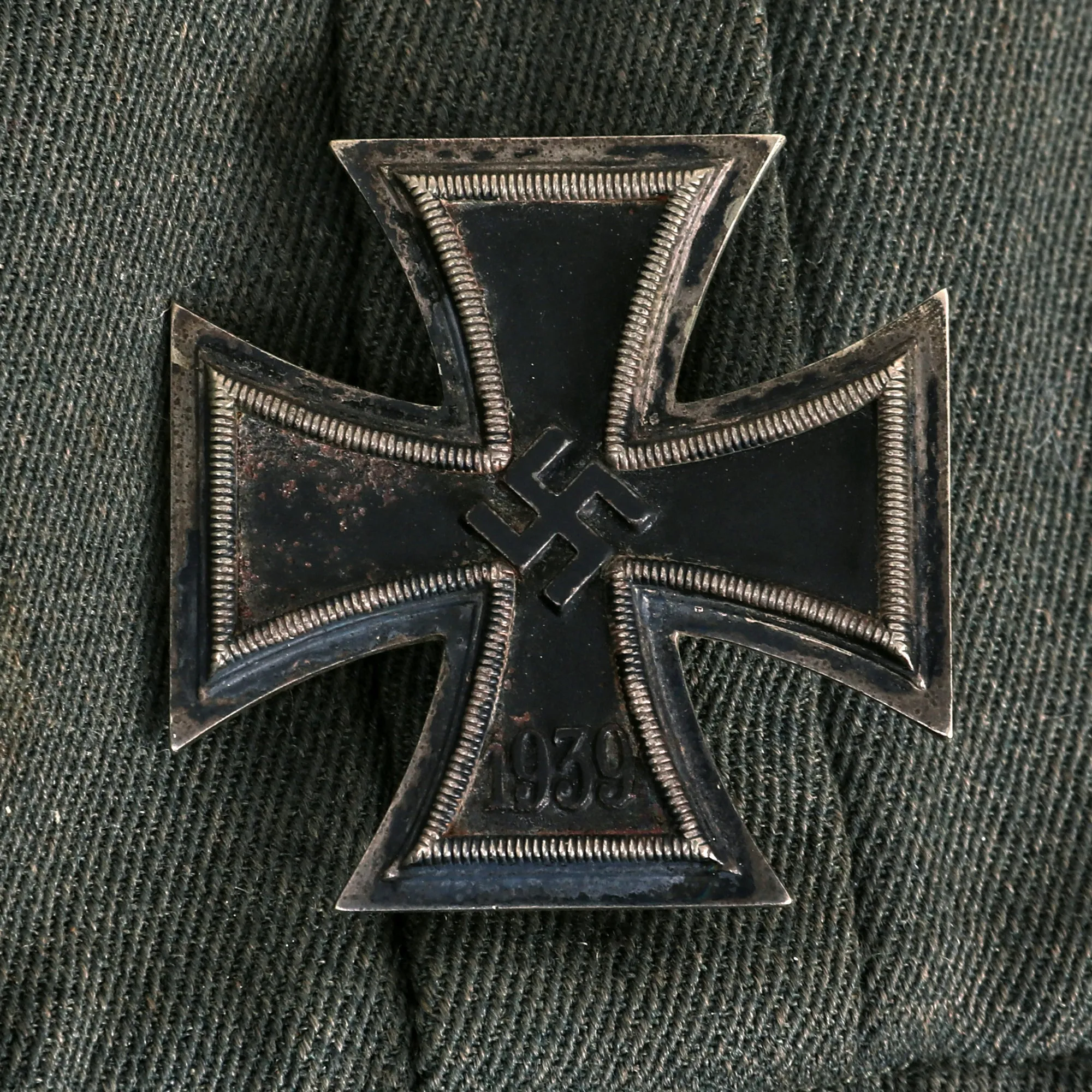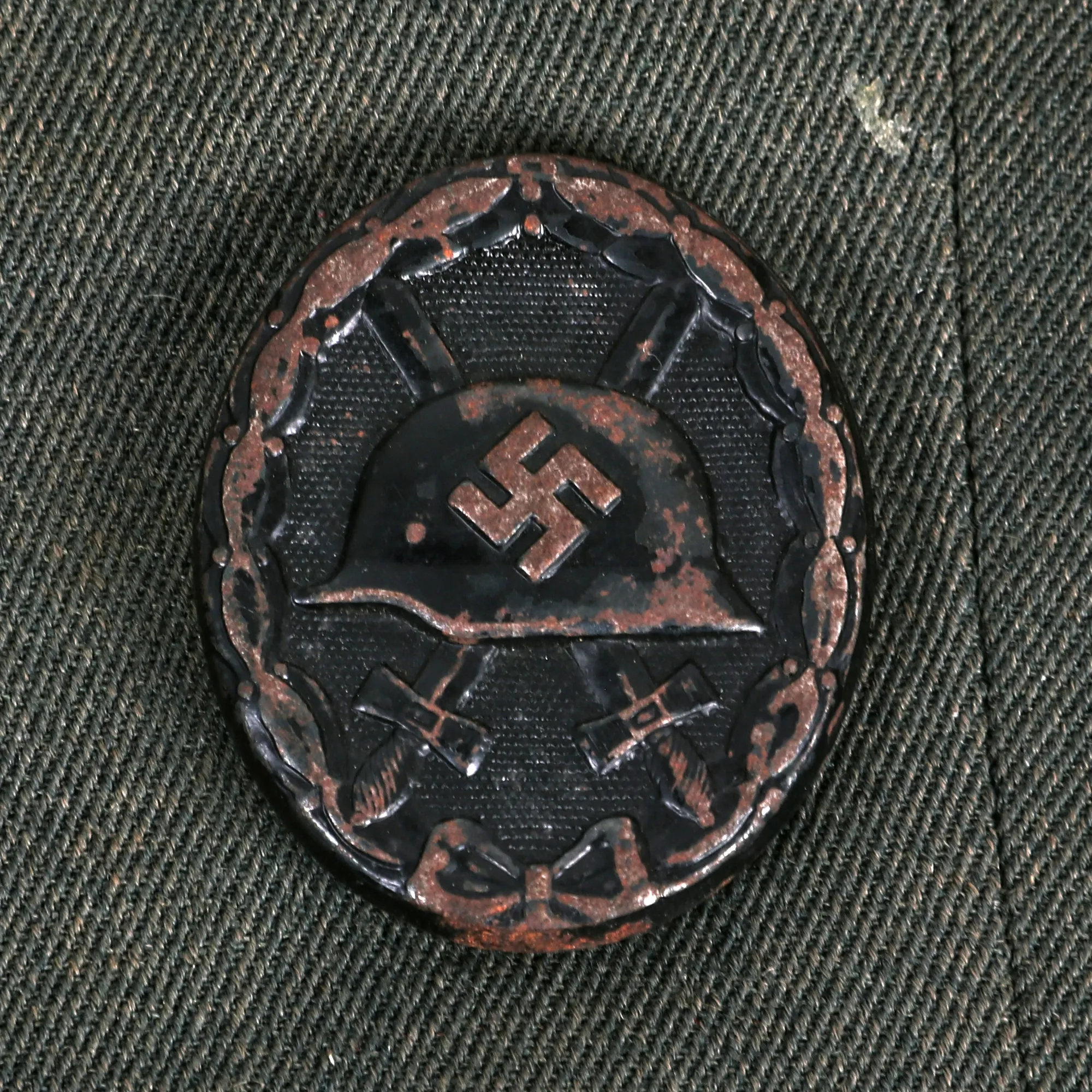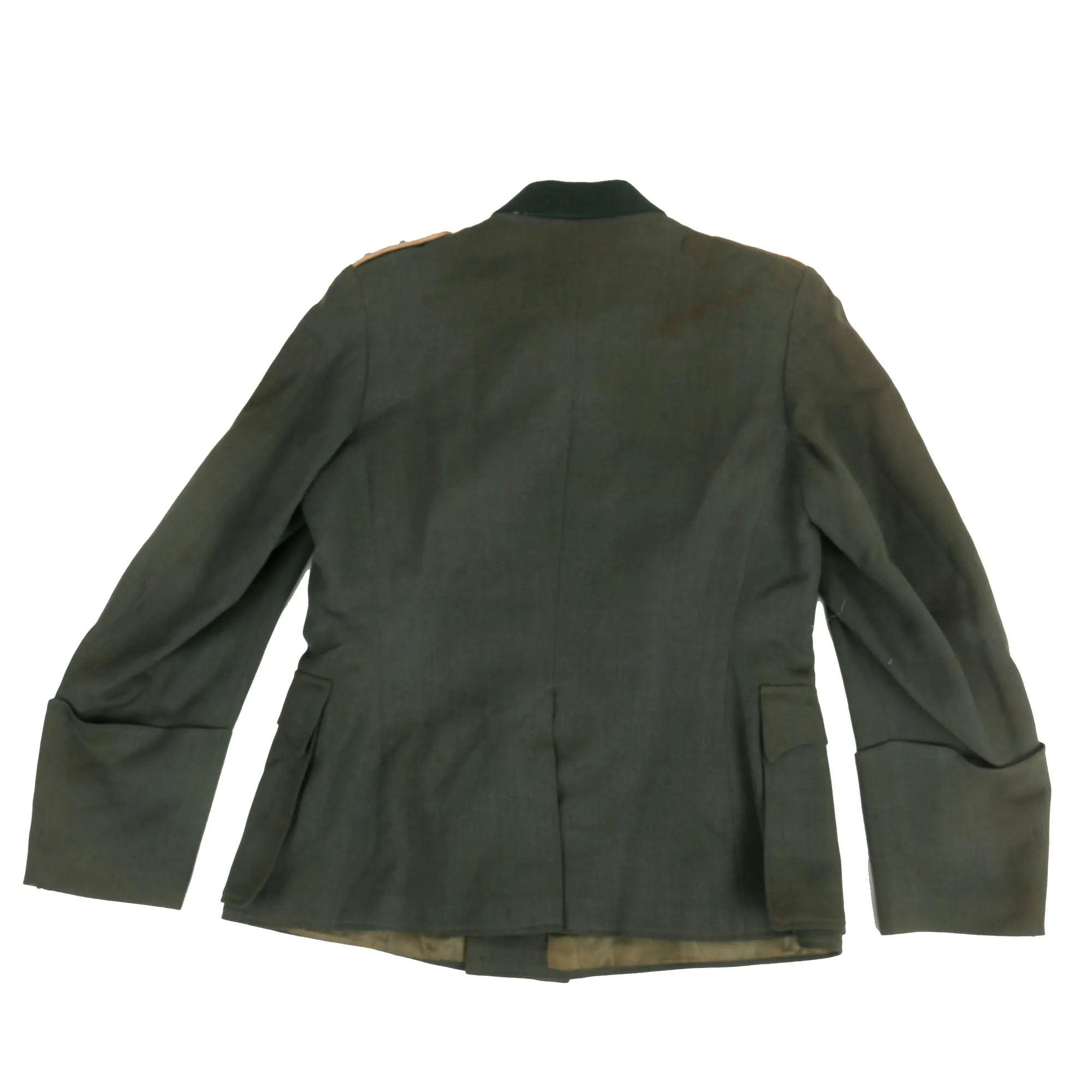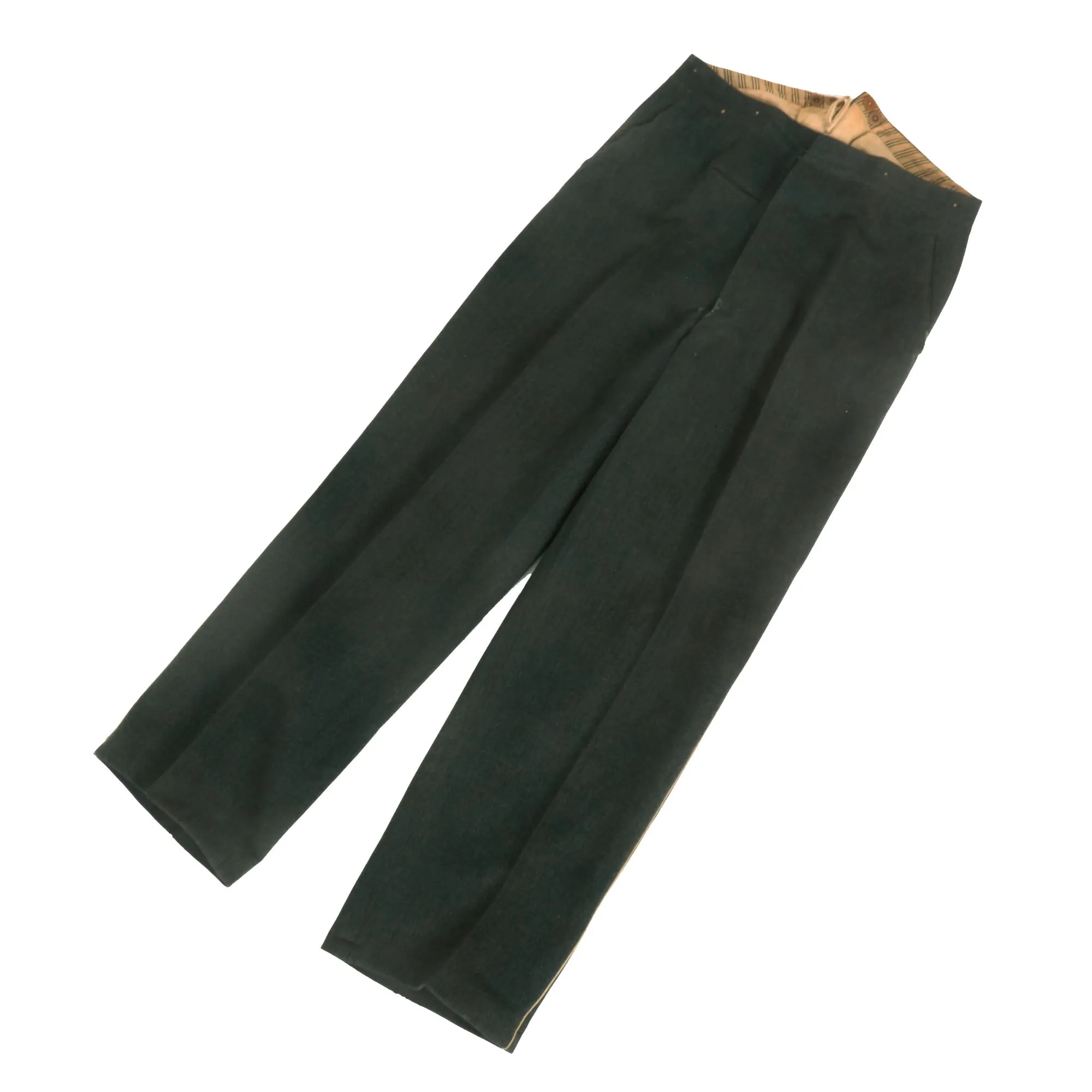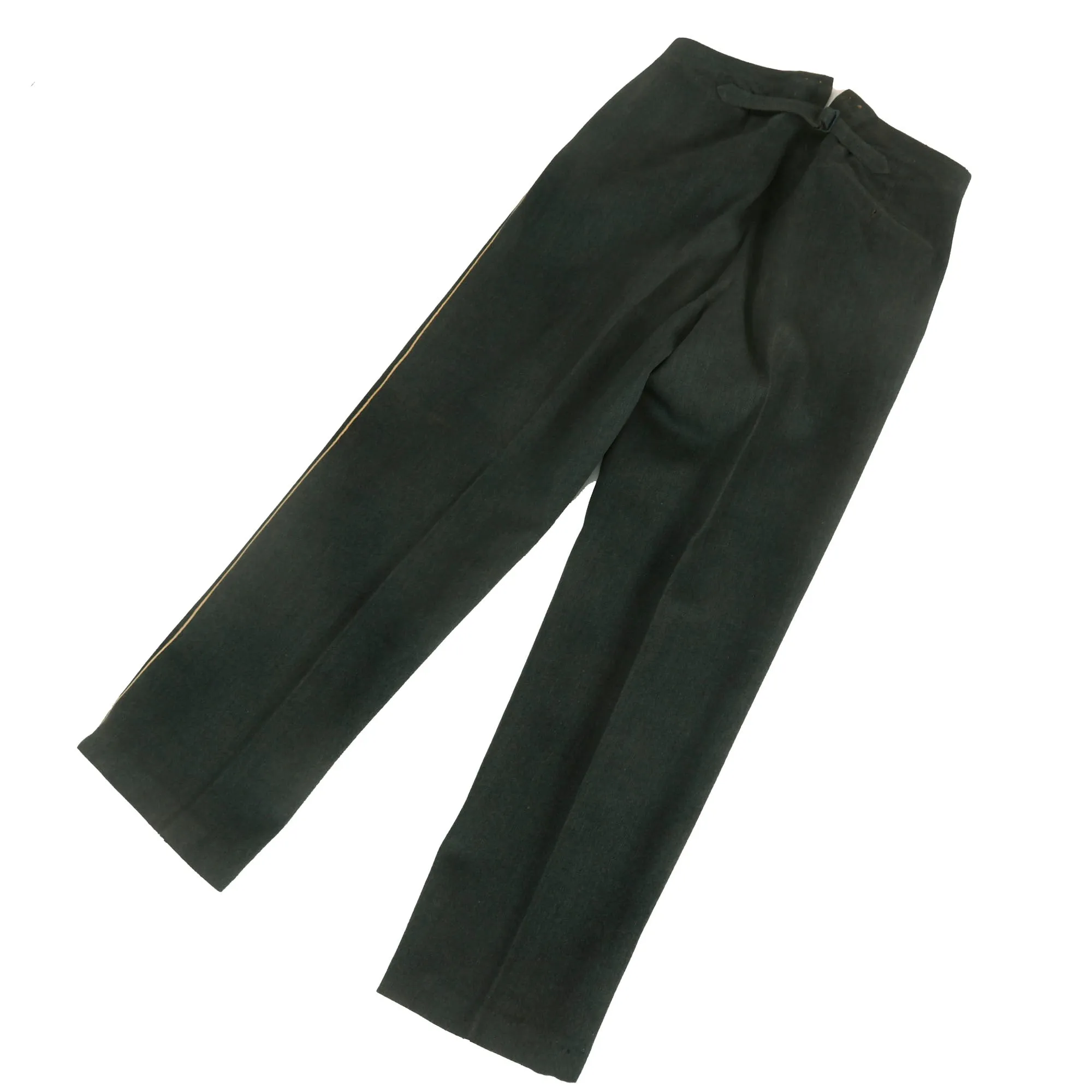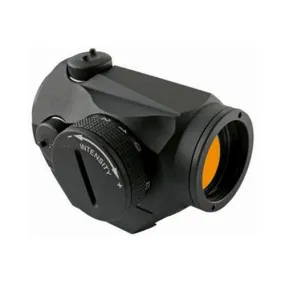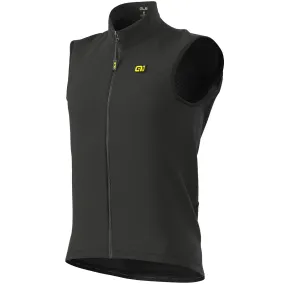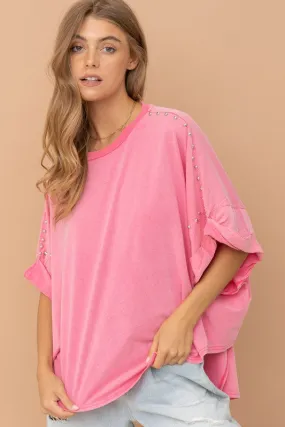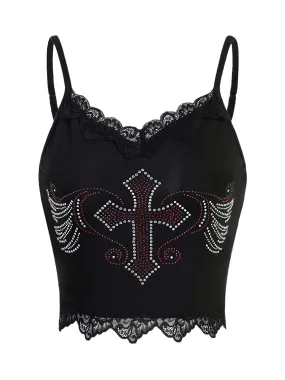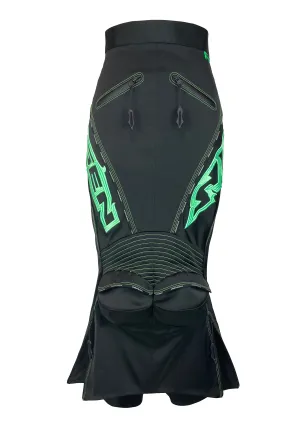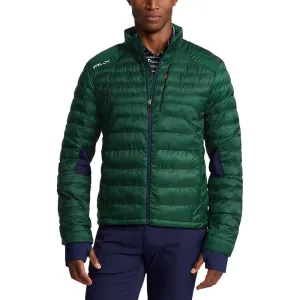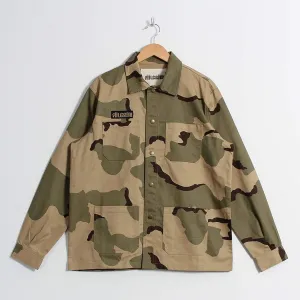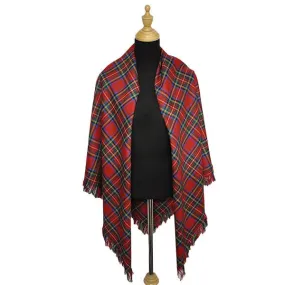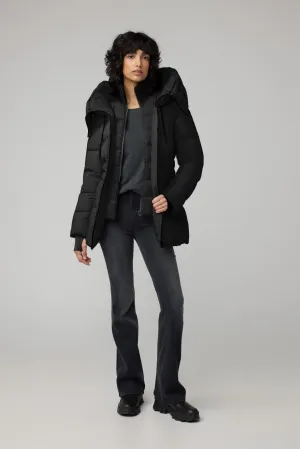Original Items: Only One Set Available. This is a very nice early pattern German WWII Heer Army Infantry Hauptmann Officer's M-36 Tunic, complete with the correct trousers as well as some great awards. The set shows moderate wear from service and in very good display condition. Unlike many uniform sets that we see, this tunic still has an intact tailor label on the inside of the inner left chest pocket! It was made by AVERBECK & BRÖSKAMP BERLIN W. in 1941. There is also a name and possibly rank written on the tag, but unfortunately it is a bit faded and in German script, so we were not able to read it accurately, Someone more familiar with reading WWII era German script would probably be able to work it out, so we leave this is an excellent research opportunity.
The tunic features four pockets with scalloped flaps and pebbled magnetic buttons, which look to be made from pebbled stamped steel with aluminum backings and eyelets. The front closure features six of the same buttons on the right breast flap meeting an equal number of reinforced buttonholes on the left flap. All of the buttons show worn green paint, and we checked the backs of the buttons, and all look to be marked with EXTRA FEIN. The buttons are sewn directly to the fabric, which does make them a bit more prone to tearing off, however these all look to be original. There are also two hook and loop collar securing fasteners, which are fully functional.
The interior is lined with with a lovely olive / gray colored rayon cotton blend, while the sleeves are lined with blue striped white rayon. There are some pulled seams near the collar as well as staining to the interior, but we do not see any major tears or repairs. There is definitely wear to the interior, with light fraying present, as well as staining in areas. There is also a large eyelet that connects to the exterior under the left waist pocket for the dagger to hang through.
It is adorned with the usual rank and branch insignia used on German tunics. The attractive Army breast eagle is the correct officer's silver bullion BeVo embroidered type on a green background, and is stitched to the outer layer of fabric only. There is just a bit of fraying on the eagle due to wear. The collar is wrapped in flaschengrün (dark bottle-green) wool, and has officer's field litzen collar patches on each side, which are woven from silver bullion thread with a dark bottle green background matching the collar. It is in good shape, tough there is wear and some holes around the top edge, which is usually one of the first places to show damage from use. The collar stiffener has also cracked through around the top, and has been repaired.
The colored stripes on the litzen are oxidized Weiß (white) Silver Bullion, the Waffenfarbe (Corps Color) during WWII for Infanterie (Infantry) and Motorisiert Infanterie (Motorized Infantry). The collar is in good shape, tough there is wear and some holes around the top edge, which is usually one of the first places to show damage from use. The collar stiffener has also cracked through around the top, and has been repaired. The “sew-in” style company grade officers schulterklappen (shoulder boards) of this tunic are constructed with two rows of fine silver flatware "Russia Braid" double piping and have the correct white piping around the edges. There are two rank "pips" installed, indicating the rank of Hauptmann, equivalent to a U.S. Army Captain.
The left chest pocket has two thread loops on it, where there is a very nice patinated Iron Cross First Class 1939 attached, which is completely correct. It is marked on the rear below the pin catch with Präsidialkanzlei des Führers Lieferant (Presidential Chancellery Supplier) number 3, which represents Wilhelm Deumer of Lüdenscheid. a very desirable maker. Below this is a hollow back steel WWII Wound badge 3rd class in black, for one wound during service. There is also a medal ribbon bar above the pocket, which indicates that he received the following awards: WWII Iron Cross 1939 2nd Class EKII, German WWII War Merit Cross 2nd Class KVKII with Swords (for front line combat), and what looks to be the WWII German and Italian African Campaign Medal, but it is upside down / reversed.
Overall condition is very good, showing wear and staining consistent with moderate service. We cannot see any major mothing or other issues with the uniform, just a few nips around the collar insignia and some scattered small holes and tears to the exterior. The litzen and shoulder boards also show some light wear. This is a uniform tunic that that saw moderate service during the war, and overall it displays very nicely.
Along with the tunic and there is a lovely pair of officers trousers in the correct stone gray (steingrau) color, with white stripes on the side for infantry issue. They show moderate wear from service, matching the condition of the tunic. We can see some repairs in areas, and they have a great "been there" look to them.
A very nice named tailor made made German Infantry Officer's Tunic and Trousers with some great awards and research potential, ready to display!
Approximate Measurements:
Collar to shoulder: 9"
Shoulder to sleeve: 25”
Shoulder to shoulder: 14”
Chest width: 18.5"
Waist width: 18"
Hip width: 21"
Front length: 28"
Pants:
Waist: 13"
Inseam: 29"
Field Tunic (Feldbluse) Model 1936
Terms such as M40 and M43 were never designated by the Wehrmacht, but are names given to the different versions of the Model 1936 field tunic by modern collectors, to discern between variations, as the M36 was steadily simplified and tweaked due to production time problems and combat experience.
When the NSDAP came to power in early 1933 the Reichswehr, the armed forces of the Weimar Republic, were near the end of a two-year project to redesign the Army Feldbluse (field-blouse). Beginning in that year the new tunic was issued to the Reichsheer and then the rapidly growing Wehrmacht Heer, although minor design changes continued to be made until the appearance of the standardized Heeres Dienstanzug Modell 1936. The M36 tunic still retained the traditional Imperial and Reichswehr uniform color of grey-green "field gray" (feldgrau) wool, but incorporated four front patch pockets with scalloped flaps and pleats (on Reichswehr tunics the lower pockets were internal and angled). The front was closed with five buttons rather than the previous eight, and the collar and shoulder straps were of a dark bottle-green instead of the Reichswehr grey. Compared to the Weimar-era uniforms the skirt of the feldbluse was shorter and the tailoring was more form-fitting due to Germany's adoption of mechanized warfare: soldiers now spent much time in the confined space of a vehicle and a shorter jacket was less likely to pick up dirt from the seats. It also included an internal suspension system, whereby a soldier could hang an equipment belt on a series of hooks outside of the tunic. These hooks were connected to two straps inside the lining, which spread the weight of equipment without having to use external equipment suspenders. The M36 was produced and issued until the very end of the war, though successive patterns became predominant.




